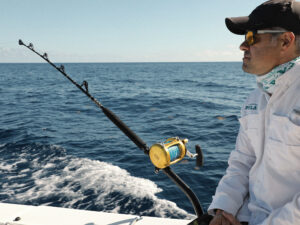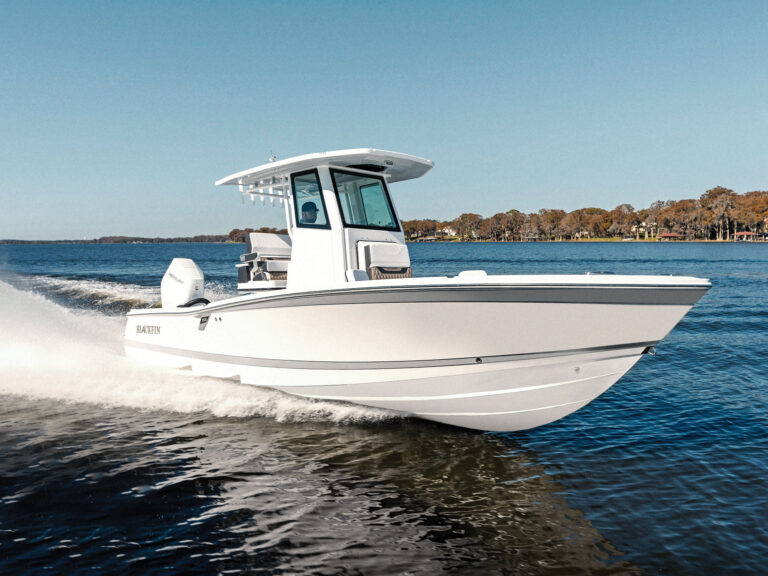
I frequently receive inquiries from anglers, guides and angling clubs that want to start a fish-tagging project. I follow up with a list of questions, which include but are not limited to: What
species and where? Are you partnering with fisheries scientists? How much funding do you have or expect to raise? Who will analyze the data? The questions make the point that launching your own tagging study is daunting.
Fortunately, there are quite a few “community science” tagging programs for anglers to take part in run by state and federal agencies, nonprofits and university researchers. Nevertheless, before getting involved, anglers must understand the objectives of the research and how the results will ultimately be used.
Spaghetti Tags
Let’s start with the most common tagging method. Colored and labeled T-bar anchor tags and dart tags, sometimes called spaghetti tags, are relatively inexpensive, and often tens of thousands of fish must be tagged to get even a small percentage of recaptures.
In addition to the ocean being a big place and the probability of recapturing a tagged fish being relatively low, any tag mounted externally on a fish has the potential to fall off or be scraped off by the fish. We also don’t know the path a fish took between the place it was tagged and the place of recapture, which further emphasizes the need to tag a lot of fish with these types of external tags.
With community science programs that use spaghetti tags, considerable education and outreach are needed to ensure anglers know where and how to tag fish to reduce tag loss. Keeping the gills submerged is important since fish don’t breathe out of the water. I can’t tell you the number of images I see of fish being tagged while drying out on the deck of a boat. An established and easy system for anglers to report tagging and recapture info is also important.
Satellite and Acoustic Tags
Other externally mounted tags include satellite tags and acoustic (ultrasonic) tags. Although these types of electronic tags can provide many locations without the fish needing to be recaptured, the price per tag is much higher. Studies involving these types of tags usually run from $100,000 to millions of dollars. Also, imagine a $4,000-plus pop-up satellite tag prematurely coming to the surface, either because the fish scraped it off or the tag malfunctioned. When a project has only invested in or can only afford a dozen or so electronic tags and only 50 percent of these return data across a short time span, it is important to ask whether the results can really be extrapolated to the rest of the population.
Many studies on the movement and migration of fish show that not all fish do the same thing, which can depend on factors such as where along the coast the fish was tagged, and their size and sex. In short, the number of fish tagged—in nerd speak, the sample size—is important, as is the distribution of where fish are caught and tagged. This doesn’t just apply to electronic tags. It applies to all tagging efforts.
With some satellite tags, we can often only hope for relatively coarse positions—within tens of miles or more. For acoustic tags, specialized subsurface receivers are commonly moored, and the presence of a tagged fish is known only if it swims through the receiver’s detection range. Detection range can be influenced by factors including water depth, turbidity and boat noise. Receivers also need to be downloaded regularly to retrieve the data.
A benefit of acoustic telemetry is that tags can be surgically implanted. Surgery on a fish or shark takes training, skill and nerves, and fish can recover quickly with no permanent impacts. Many fish don’t even scar. Implanting a transmitter with up to a 10-year battery life can generate tons of data, but only if there are receivers in the water to detect them. A benefit of acoustic telemetry is that receivers can be placed close together so that fine-scale movements in the range of tens of feet can be measured.
A manual receiver can also be used to track movements of fish in real time. Tags can also be equipped with sensors that measure the depth of the fish, water temperature, activity, and even if the fish was eaten by a predator.
PIT Tags
Another tag type that is implanted is PIT tags (passive integrated transponders), the same type of tag used in dogs and cats. Although hand-held readers are needed to detect PIT tags, they don’t use batteries, tag retention is high, and there is no external appearance. These along with a series of hypotheses were important considerations for a project I’ve been conducting for several years on giant trevally in the Seychelles—a project that combined PIT tagging and fixed station acoustic telemetry.
With further advancements, our capacity to track fish will only increase, as will the contribution of these efforts to conservation of our favorite species.









